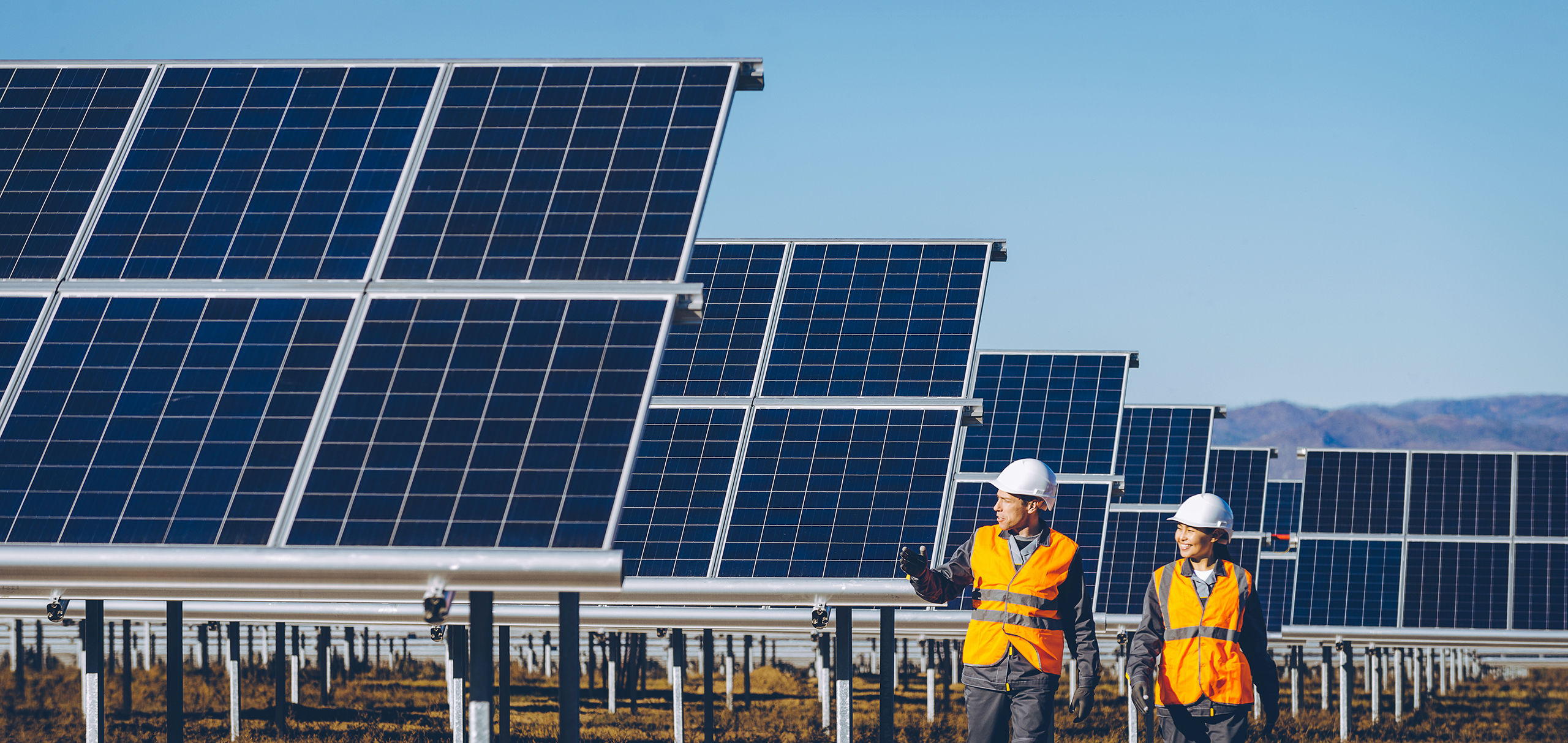
‘Shock’ing insights into carbon tax-induced innovation in green energy
Recent research looked to the past — to 1970s oil shocks specifically — to predict how endogenous innovation might affect green energy prices and in turn, carbon emissions.
While innovation is all about being forward thinking, Assistant Professor of Economics Stephie Fried’s recent research looked to the past — to 1970s oil shocks specifically — to predict how endogenous innovation might affect green energy prices and in turn, carbon emissions. She created a model calibrated on those unexpected leaps in oil prices, which had a similar innovation-inducing effect as a carbon tax, and found that it’s likely to take a lower tax to achieve carbon emissions targets than previously thought.
In her recent paper published in the American Economic Journal: Macroeconomics, Fried used evidence from historical oil shocks — after which both energy prices and energy innovation increased substantially — to show that a carbon tax can induce significant changes in innovation. The macro model was used to determine how high the carbon tax would need to be to achieve the 30 percent reduction target in emissions in 20 years set out by President Obama’s 2015 Clean Power Plan.
“Intuitively, we know that innovation will make it cheaper to reduce carbon emissions,” Fried says. Implementing a carbon tax is one way to encourage innovation. The better we get at producing solar panels or making wind turbines, the cheaper it is to produce that form of green energy.
“If it's costly to reduce emissions, I need a much bigger tax because I have to create stronger incentives for people to switch to a more expensive form of electricity or a hybrid car or something like that,” Fried explains. “But if innovation responds to the policy, then clean-energy sources become cheaper over time. This decreases the cost of reducing emissions, and as a result, we don’t need as big of a tax to hit the target.
Sustainable snowball
According to Fried’s model, the innovation response increases the effectiveness of the policy in reducing emissions. If green innovation occurs as her model predicts, the carbon tax needed to hit the 30 percent reduction goal is $24.5 (in 2013 dollars) per ton of carbon dioxide. That’s a 19.2 percent decrease in carbon tax size compared to a scenario that doesn’t take innovation into account.
How does that work? A carbon tax shifts demand from fossil energy sources to green energy sources — even without innovation, Fried says. For example, suppose solar electricity is more expensive than coal electricity. A carbon tax increases the price of coal electricity, incentivizing some people to switch from coal to solar. Now consider a world with innovation. The increase in demand for solar electricity as a result of the carbon tax increases the returns to innovating in solar. Scientists develop new solar technologies, which further reduces the price of solar electricity relative to coal. This additional price change incentivizes even more people to switch from coal to solar, generating more reductions in emissions. Essentially, you can think of innovation as magnifying the original price incentives created by the carbon tax.
It won’t happen overnight, though. “Innovation takes time to accumulate,” Fried says. “If I want to achieve a lot of emissions reduction fast, say in two years, then relying on innovation to get a lot of it done is probably not achievable. But if I want to achieve it in 50 years, then innovation can play a bigger role. It's a slower process, and it has to build on itself, and that takes time.”
Shocking comparisons
As Fried says in her paper, her model works because, “The oil shocks provide empirical evidence of the response of energy innovation and production to an aggregate increase in the energy price.”
That comparison doesn't match exactly, which is one reason it is important to study this question in the context of the model, as opposed to a strictly empirical analysis. “When the fossil-energy price goes up because of an oil shock, this increases the returns to both green-energy and fossil-energy innovation. In contrast, when the fossil-energy price goes up because of a carbon tax, this increases the return to green-energy innovation and decreases the return to fossil-energy innovation.” If there is competition for innovation resources (i.e., scientists), then we would expect the response of clean-energy innovation to be larger when the price change is caused by a carbon tax than when it is caused by an oil shock.
Fried includes an oil sector in her model to incorporate this channel, which shows that the increase in green innovation in response to a carbon tax is larger than the increase from an oil shock, as the above intuition suggests.
The three-sector model Fried used in her analysis:
- Fossil innovation: innovation related to oil, coal, or natural gas
- Green innovation: innovation in wind, solar, or nuclear energy, and energy-efficiency improvements
- Non-energy innovation: innovation outside the energy industry
“The first two sectors, fossil and green, are important for allowing the model to capture the difference between an oil price shock and a carbon tax,” she says. The third sector, non-energy, is essential for the model to match the macroeconomy. “Energy, as important as it is, is a tiny, tiny portion of all innovation happening. To get meaningful macroeconomic implications, you need that third sector to soak up everything that's not energy,” Fried says.
Latest news
- Ethical leadership: Good policy may prompt bad behavior
New research findings reveal how managerial approaches to integrity influence team morale and…
- W. P. Carey alum Paridhi Saboo found passion for analytics and real estate during undergraduate journey
Thanks to the many opportunities available to students at W. P.
- Trump suggested 50-year mortgages. This expert calls that 'renting from the bank'
A veteran housing analyst says stretching repayment over five decades offers minimal financial…